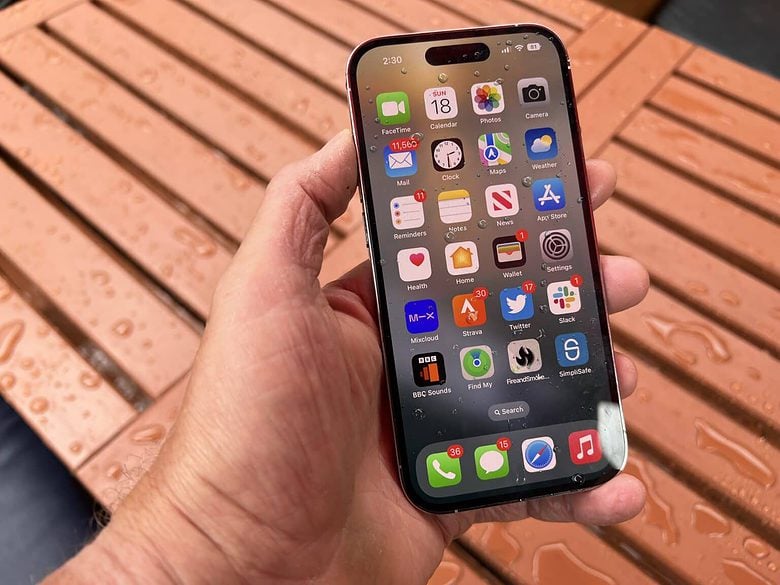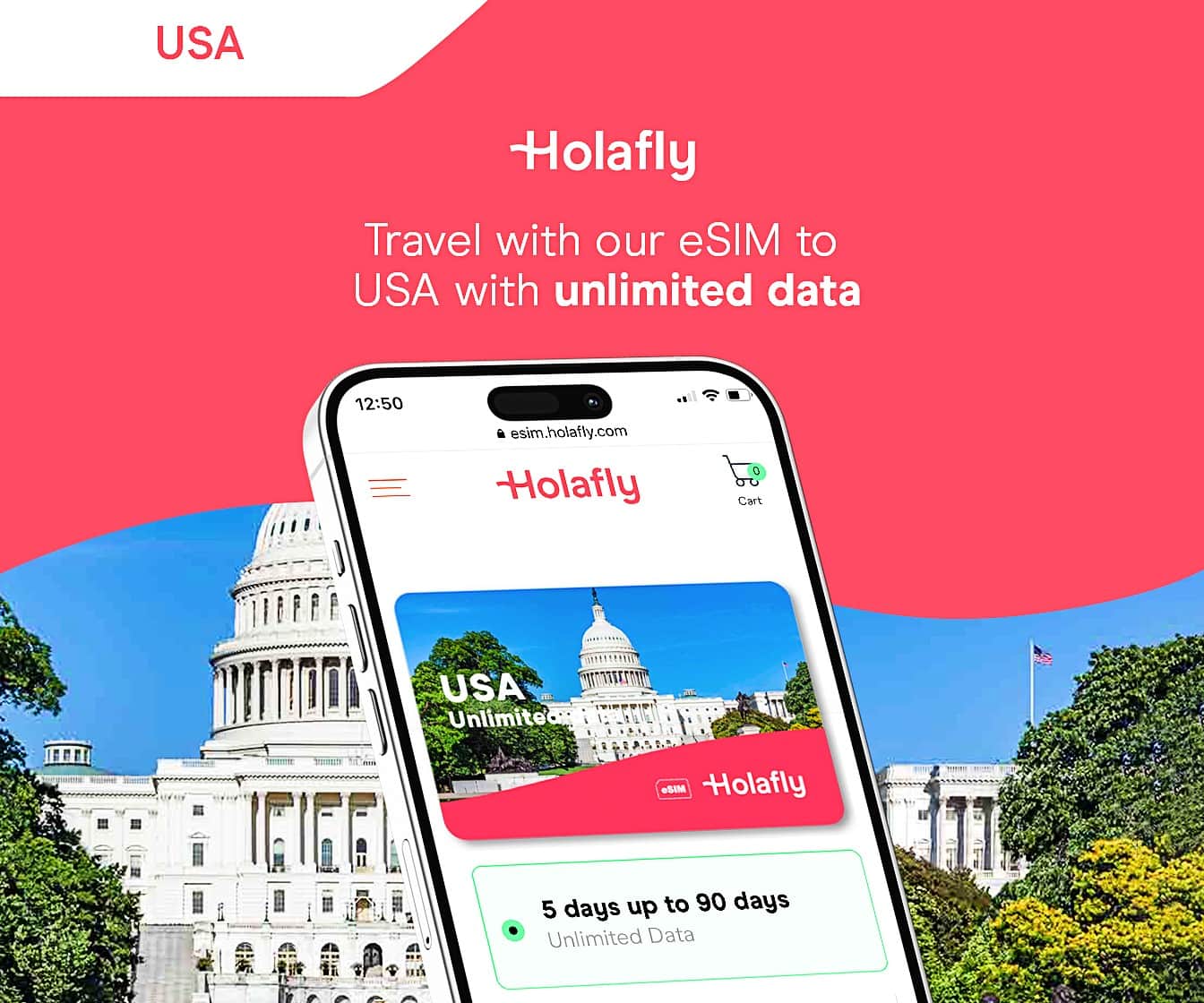You’re probably familiar with SIM cards, the little microchip cards that you can slide into your cellular device via a tiny tray on the side. But do you know that virtual SIM card technology — eSIM — has evolved to replace the clumsy SIM card? eSIM makes changing up your data plan for travel and other needs easier than ever before.
How eSIM technology evolved to help iPhone users stay connected while traveling and more
Traditional plastic SIM cards carry a little microchip with enough data on it to tell a cellular communications provider about your phone line and help your handset communicate with cellular network infrastructure. eSIM does the same thing, but it uses a chip already in your smartphone. Plus, it can do more than a traditional SIM card.
Traditional SIM cards first appeared in 1991 — 32 years ago! Back then, they were as big as a credit card. Over the years, plastic SIM cards shrank to fit into more compact phones. And like other microchips, they increasingly handled more data.
The recent nanoSIM cards are tiny. But that’s not much of a benefit if you drop one and can’t find it, or if you break one of the tiny things trying to extract it from its packaging.
And in the case of some iPhone 14 models, a traditional SIM card can’t even be used. We’ll get into that more below, after we introduce a great way to take advantage of eSIM for iPhone and other devices: Holafly eSIM.
The many benefits of Holafly eSIM
Holafly eSIM helps with many of the hassles of traditional SIM cards. Mainly, with eSIM there is no tiny plastic card for you to worry about. Did you pack it? Can you tell it apart from other SIM cards you may need on your trip? Did you lose it or damage it? If so, how will you replace it?
With Holafly eSIM, you will have the capacity to connect over the internet in any of 164 countries where you might travel and use a designated, prepaid cellular plan — even with unlimited data. That helps you easily avoid roaming charges. And you can quickly switch to another country and plan, without the need to physically insert another SIM card.
In fact, you can get an eSIM with unlimited data for the entire European continent. So, if you are going to travel to numerous countries in Europe, you can get Holafly’s eSIM Europe. With it, you will get internet coverage in more than 20 countries, including Turkey, Spain, Italy, France, Germany, the United Kingdom, etc., with just one payment.
More than that, you can switch back to your home SIM anytime (and even to a physical SIM card if your phone still accommodates one in addition to eSIM).
Apple eSIM tech revolution
Traditionally, when Apple leads the way on a new technology, you can bet it’s a winner that is here to stay.
The integrated chip on an eSIM-compatible smartphone — like any recent iPhone — is smaller than a nanoSIM and allows up to 20 “eSIM profiles” to be stored. And each one can have a different phone number and data plan.
That means a service like Holafly eSIM can help you set up your iPhone with up to 20 different plans. That makes SIM card hassles related to international travel — like shuffling multiple cards and possibly suffering huge roaming charges — things of the past.
iPhone 14: The first cellphone with eSIM only

Photo: Leander Kahney/Cult of Mac
The biggest sign that eSIM is the future of mobile cellular is that Apple went all in on it for the iPhone 14. In the United States, iPhone 14 models have only eSIM technology. They don’t even have a physical SIM card tray that slides out of the side of the iPhone. (Read more about using Holafly eSIM with iPhone 14.)
When Apple does something like that, others surely will follow. And in fact, others are following. eSIM is growing fast. Soon enough, physical SIM cards will go extinct.
Which iPhone models are compatible with virtual eSIM?
Many mobile phones and tablets already support eSIM. That includes a large number of devices from Apple, Samsung and Google. The Apple devices are listed below. Check out the entire list of supported devices.
iPhones
- iPhone XR
- iPhone XS, iPhone XS Max
- iPhone 11 Pro
- iPhone SE 2 (2020)
- iPhone 12 series
- iPhone 13 series (can have two eSIMs activated)
- iPhone SE 3 (2022)
- iPhone 14 series (can have two eSIMs activated)
iPads (4G connectivity):
- 11-inch iPad Pro (model A2068, from 2020)
- 12.9-inch iPad Pro (model A2069, from 2020)
- iPad Air (model A2123, from 2019)
- iPad (model A2198, from 2019)
- iPad mini (model A2124, from 2019)
Where can you buy an eSIM for iPhone?
Working with some eSIM operators, you need to go to a physical store to set it up. That can mean waiting in line, among other hassles (traffic, parking, etc.). A great way to get around that is the use Holafly international eSIM.
With Holafly eSIM, all you have to do is go to the website and select an eSIM for your destination — for example, eSIM USA. Then just follow a few easy steps to set it up (see the video below), and that’s it. You will get data service in less than a minute.
Conclusion
As SIM cards evolved since their introduction in 1991, they’ve gotten smaller and their microchips have packed in more data to enable gadgets’ cellular use. But they were still physical cards that customers had to deal with, including the risk of losing or damaging them.
Fortunately, eSIM has evolved to take their place, and Apple and its iPhones and iPads are leading the revolution. That means iPhone and iPad owners can use a service like Holafly to set up as many as 20 profiles with different data plans and phone numbers.
So, go ahead and travel the world without SIM card hassles or roaming charges!


